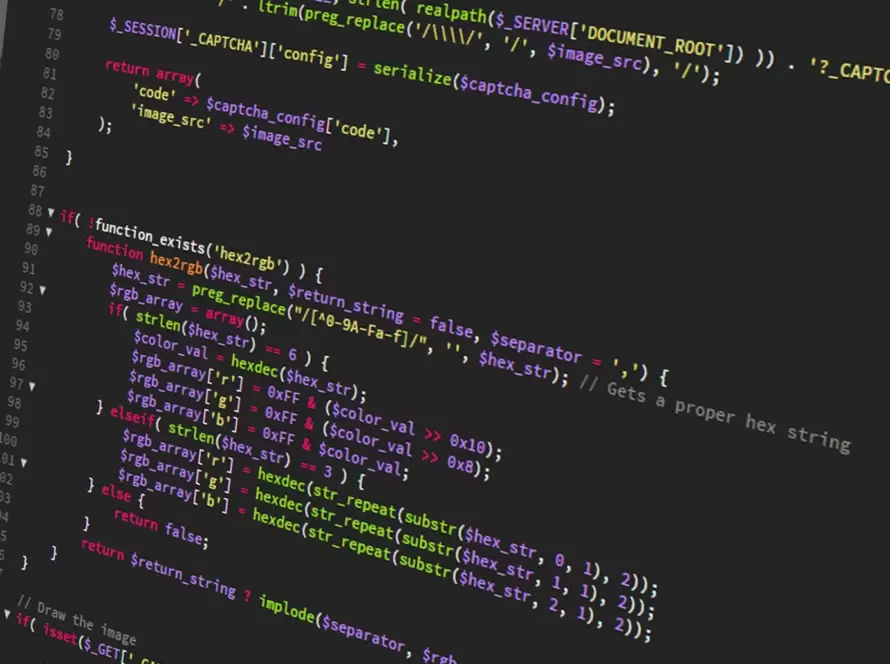Generated by Contentify AI
- Understanding Object-Oriented Programming
- Benefits of Object-Oriented PHP
- Encapsulation and Inheritance in PHP
- Polymorphism and Abstraction in PHP
- Best Practices for Object-Oriented PHP Development

Understanding Object-Oriented Programming
Object-oriented programming (OOP) represents a fundamental shift in the way developers think about and structure their code. At its core, OOP focuses on the concept of objects, which are instances of classes. These objects can contain both data, in the form of fields (often known as attributes or properties), and code, in the form of procedures (often known as methods). When exploring the power of Object-Oriented PHP, it becomes evident how this approach facilitates a more modular, scalable, and maintainable framework for developing web applications.
PHP, initially created as a simple scripting language for small tasks, has evolved into a robust programming language capable of large-scale enterprise solutions. This evolution was significantly propelled by the integration of object-oriented concepts. Object-oriented PHP allows developers to encapsulate related logic and data within classes, making the codebase more organized and cohesive. This methodology not only improves readability but also enhances the reusability of code.
In the context of PHP, classes are defined blueprints for creating objects. These blueprints dictate the structure (attributes) and behavior (methods) of the objects. By leveraging these classes, PHP developers can create complex data types that are tailored to their specific application needs, leading to more efficient and effective solutions.
Understanding Object-Oriented Programming is pivotal for mastering PHP at a higher level. It opens up avenues for applying principles such as encapsulation, inheritance, polymorphism, and abstraction, which are cornerstones of OOP. These principles further refine the approach developers take in problem-solving and system architecture design. As we delve deeper into the specifics of object-oriented PHP, the significance of these principles and their practical applications become increasingly apparent, showcasing the truly transformative power of OOP in PHP development.
Benefits of Object-Oriented PHP
Object-oriented PHP introduces a structured approach to programming that brings about several key advantages, especially when compared to its procedural counterpart. One of the primary benefits is enhanced code organization. By organizing code into classes and objects, developers can model real-world scenarios more effectively, making the codebase easier to understand and manage. This structured approach significantly reduces development time and increases efficiency, as it allows for code reuse across different parts of a project or even across different projects.
Moreover, exploring the power of object-oriented PHP reveals its ability to facilitate scalability. As applications grow in complexity, maintaining and updating procedural code can become increasingly difficult. The encapsulation provided by object-oriented programming means that changes made to a specific part of an application can be isolated, reducing the risk of unintended side effects. This encapsulation also enhances security, as it allows for data to be hidden from external access, exposing only what is necessary through well-defined interfaces.
Another noteworthy benefit is the ease of maintenance and debugging. Object-oriented PHP organizes code into modular units, making it simpler to identify and isolate bugs. The use of inheritance further streamlines maintenance efforts by allowing developers to create a hierarchy of classes. Subclasses can inherit properties and methods from parent classes, meaning that common functionality needs to be written only once. This not only reduces the amount of code required but also makes it easier to implement changes across similar objects.
Furthermore, the principle of polymorphism in object-oriented PHP permits methods to do different things based on the object it is acting upon, even though they share the same name. This ability to call the same method on different objects and have each respond in their unique way is invaluable for creating flexible and dynamic code.
Lastly, the implementation of design patterns becomes more feasible with object-oriented PHP. Design patterns are proven solutions to common problems in software design and can significantly speed up the development process by providing tested, reusable templates. The use of these patterns can improve code readability and reliability, leading to more robust applications.
In summary, the transition to object-oriented PHP unlocks a host of advantages, including improved code organization, enhanced scalability, easier maintenance and debugging, the ability to use polymorphism, and the implementation of design patterns. These benefits underscore the importance of exploring the power of object-oriented PHP for anyone looking to develop efficient, scalable, and maintainable web applications.
Encapsulation and Inheritance in PHP
Encapsulation and inheritance are two fundamental concepts in object-oriented programming that have significantly contributed to the efficiency and effectiveness of PHP development. When exploring the power of object-oriented PHP, it’s essential to delve into how these concepts enhance code quality and maintainability.
Encapsulation is a mechanism that bundles the data (attributes) and the code acting on the data (methods) together as a single unit. In PHP, this is achieved by defining classes. Encapsulation allows for information hiding, which is the principle of restricting access to some of an object’s components. This means that an object’s internal state cannot be directly accessed from outside its defining class—only the object’s own methods can access its private data. Hence, encapsulation in PHP enables developers to protect an object’s integrity by preventing external interference and misuse of its internal processes.
Inheritance, on the other hand, is the mechanism by which one class (called a subclass or child class) can inherit properties and methods of another class (referred to as a superclass or parent class). This feature of object-oriented PHP is pivotal for promoting code reusability. Through inheritance, developers can create a general class with broad features and then extend this class to more specialized classes, each adding its specific features. This hierarchical organization of classes fosters a more structured and understandable codebase, significantly reducing code duplication.
Together, encapsulation and inheritance empower developers by fostering a more secure, modular, and scalable approach to building PHP applications. Encapsulation ensures that object manipulation is performed in a controlled manner, while inheritance allows for the logical extension of functionality within an application’s architecture. It’s through mastering these principles that developers can unlock the full potential of object-oriented PHP, leading to more robust, maintainable, and efficient code. As the exploration of object-oriented PHP continues, it becomes apparent how encapsulation and inheritance serve as critical pillars for contemporary PHP development practices, underscoring their indispensable role in the evolution of web development.
Polymorphism and Abstraction in PHP
Polymorphism and abstraction are two of the most compelling features offered by object-oriented programming in PHP, allowing developers to design flexible and intuitive code structures. Polymorphism, derived from the Greek words for ‘many shapes,’ enables one interface to be used for a general class of actions. This is particularly beneficial in PHP, as it allows methods to perform differently based on the object that is calling them. For example, a function named `calculateArea` might process differently if it’s called on an object of class `Circle` than it would on an object of class `Rectangle`, even though the interface is the same. This ability to interact with objects of different classes through a common interface underscores the versatility and dynamic nature of polymorphism in PHP development.
Abstraction, on the other hand, involves the creation of simple, intuitive interfaces to complex systems. It allows developers to hide the complex implementation details of a functionality and expose only what is necessary for the user or calling code to know. By defining abstract classes and interfaces, PHP developers can establish a blueprint for other classes to implement. This forces a consistent structure while allowing the underlying implementation to vary. Abstraction lays the groundwork for a clear separation between what operations are performed and how they are executed, leading to cleaner, more understandable code.
When delving into the intricacies of object-oriented PHP, polymorphism and abstraction stand out as powerful tools for creating adaptable and robust applications. They encourage a coding paradigm focused on interfaces rather than implementations, promoting code reuse and reducing complexity. As developers harness these principles, their applications become more scalable, modular, and easier to maintain. This exploration into polymorphism and abstraction not only highlights the sophistication object-oriented PHP brings to software development but also showcases the practical benefits of adopting these methodologies for projects of any scale.
Best Practices for Object-Oriented PHP Development
To harness the full potential of object-oriented PHP, adopting best practices is crucial. These practices not only streamline development but also ensure the creation of reliable, maintainable, and scalable applications. Here’s a concise guide to the best practices for developers exploring the power of object-oriented PHP.
Firstly, understanding and properly applying the four fundamental concepts of object-oriented programming—encapsulation, inheritance, polymorphism, and abstraction—is essential. Encapsulation ensures that a class’s internal state is hidden from the outside, only exposing necessary functionalities. Use inheritance judiciously to avoid unnecessary complexity; it’s powerful for code reuse but can make the codebase difficult to navigate if overused. Polymorphism and abstraction together allow for flexible and interchangeable object interactions, promoting a modular and decoupled design.
Secondly, adhere to the SOLID principles. These principles guide the design and architecture of software for it to be more understandable, flexible, and maintainable. The Single Responsibility Principle, for example, dictates that a class should have only one reason to change, enhancing its cohesion. Open/closed, Liskov substitution, Interface segregation, and Dependency inversion principles similarly guide developers in creating more robust applications.
Furthermore, naming conventions and coding standards cannot be overlooked. Clear, descriptive names for classes, methods, and variables make the code more readable and maintainable. Following established PHP coding standards, such as those recommended by the PHP Framework Interop Group (PSR standards), helps maintain consistency, especially in projects with multiple contributors.
Another critical practice is the use of Composer, PHP’s dependency manager. Composer facilitates easy management of libraries and packages, ensuring that you have the latest, most secure versions of the dependencies your project needs. It also standardizes the autoload mechanism for your classes, making them readily available without requiring manual inclusion.
Testing is an integral part of the development process, particularly unit testing. Writing tests for your classes and methods ensures that your code behaves as expected. Tools like PHPUnit make it easier to implement testing in PHP projects, enabling test-driven development (TDD) or behavior-driven development (BDD) methodologies to be adopted.
Lastly, consider leveraging design patterns. Design patterns are proven solutions to common problems encountered in software design. Exploring and implementing these can significantly improve the efficiency and reliability of your applications. Patterns such as Factory, Singleton, or Observer can be particularly useful in object-oriented PHP development, offering templates for tackling recurring design issues.
Incorporating these best practices into your development workflow when



